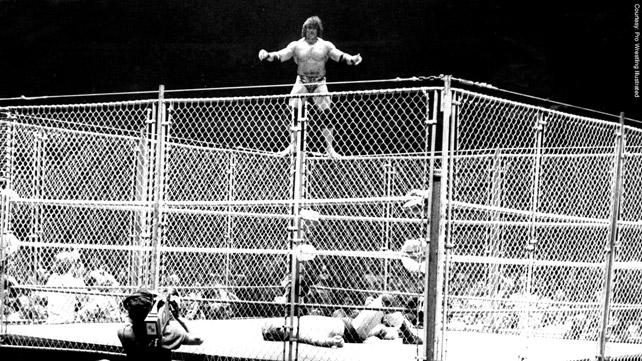There are few contests in WWE that are more treacherous than those held within the confines of a steel cage. For more than 50 years, the steel cage was a domain where rivalries were put to rest, whether it was Bruno Sammartino battling his arch nemesis Ivan Koloff in 1975, or Magnum T.A.’s historic victory over Tully Blanchard in a Steel Cage “I Quit” Match in 1985, scores were settled definitively.
The match type dates back to the 1930s with variations ranging from a relatively small — by today’s standards — 6-foot-high cage to a structure made of chicken wire. In 1982, however, WWE Hall of Famer Jimmy “Superfly” Snuka changed the landscape of sports-entertainment and jumpstarted the continuing evolution of the steel cage. During a battle with his nemesis, Don Muraco, Snuka ascended the steel cage and leaped from the top to the delight of the awestruck inside the WWE Universe.
Following that legendary moment, the Steel Cage Match began to change. Superstars looked at it as more than just an unforgiving structure and variations beyond the height of the four walls confining the squared circle began to take shape. And, for as long as the cage itself has evolved, Superstars have done whatever possible to escape its diabolical clutches. Presented by “Escape Plan,” in theaters on Oct. 18, WWE Classics examines the most prominent structural variations of the cage, how they took on a life of their own and how Superstars have tried to claw their way out from these metal monstrosities.
What is your favorite steel cage structure? Let us know in the comments below and on Facebook.com/WWEClassics.
Check out the full article:
http://www.wwe.com/classics/classic-lists/evolution-steel-cage
